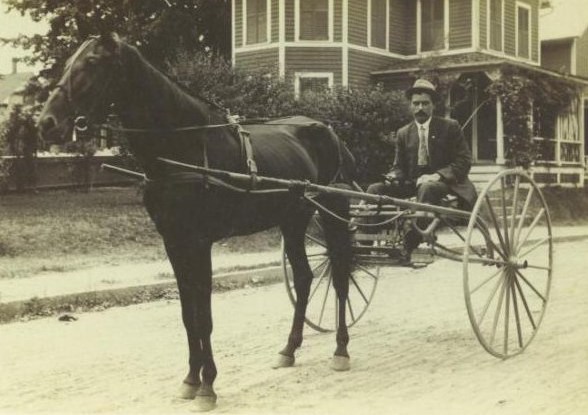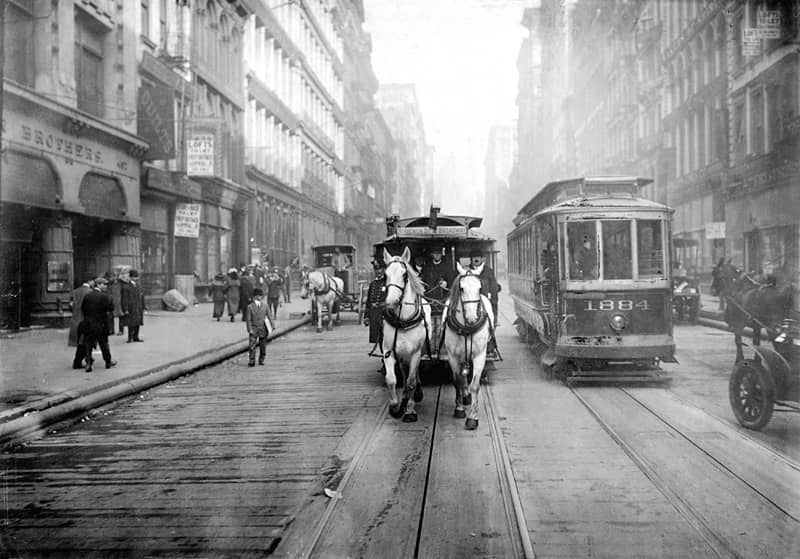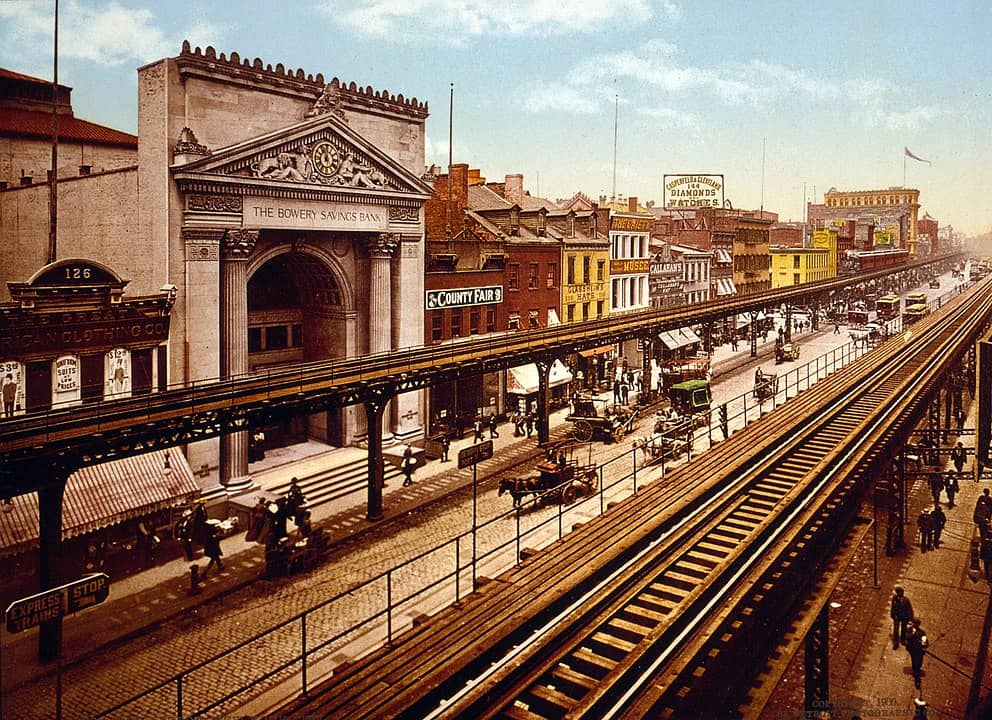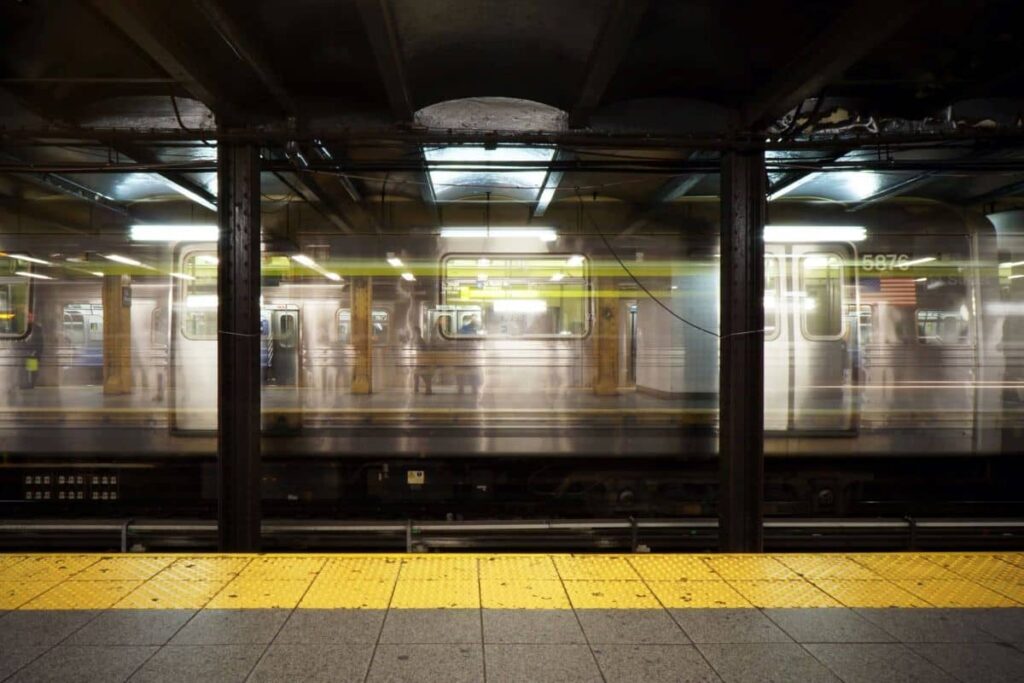We all know New Yorkers love to complain about the subway. However, our current transit system doesn’t seem so bad when you consider that commuters in centuries past had to deal with such inconveniences as literal tons of horse dung piled on street corners and risking life and limb dodging cable cars on Union Square’s charmingly-named Dead Man’s Curve. In order to understand the extraordinary degree to which New York City’s public transit evolved to be safer and more efficient, it’s necessary to look back several centuries at how commuters used to get around.
The Horsepower Era

Many of what would become New York’s major thoroughfares, including Broadway and Lafayette Street, were originally walking paths used by the Lenape, Manhattan’s indigenous people, as trade routes. In the first several decades after Dutch colonizers established “New Amsterdam” on the southern tip of Manhattan Island, the city was small enough to be navigable by foot. However, as New York became “New York” and ballooned into the largest city on the continent, it became more common for workers in the city to live upwards of a mile from their place of employment.
The city’s earliest commuters got around primarily on horse and buggy, but the first true form of public transit in New York was the horse-drawn omnibus, a large stagecoach that could fit up to a dozen passengers. Beginning in 1827, when the first public transit route was established, omnibuses started traversing a set course around the city each day. For the first time, commuters had a reliable and affordable means of catching a ride to work.
However, the sheer number of horses necessary to keep Manhattan moving—more than 150,000 by the late 19th century—led to problems of its own. A horse generates about twenty-two pounds of manure per day, resulting in a total of 100,000 tons of feces dumped on the city streets over the course of a year. Additionally, city living was hard on horses, and it was not uncommon for their bodies to be left in the street to rot when they collapsed on the job.
Streetcars and Cable Cars

The public health crisis caused by Manhattan’s swelling equine population created a pressing demand for a new form of transportation. The first step came in 1832 with the introduction of the horsecar, a streamlined version of the omnibus that ran on metal tracks. The tracks rested directly into the ground rather than over the bumping paving stones of the streets themselves. These horse-drawn streetcars offered a smoother, faster ride than the omnibus and also required less horsepower.
The debut of New York’s steam-powered cable car in 1883 finally offered commuters a horseless transportation option. To get around, these vehicles made use of a continuously-moving steam-propelled cable system buried under the city streets: if conductors wished to stop, they simply had to disengage from the cable and wait for their car to come to a halt. While it was difficult to regulate their speed—especially when it came to stopping on a dime—cable cars were even faster and more efficient than horsecars.
Another game changer was the implementation of the first electric streetcars in the 1890s, which began with Brooklyn’s Coney Island Avenue Line and quickly spread outward to consume the city. In fact, Brooklyn’s baseball team was originally named the “Trolley Dodgers” as an homage to the complex tangle of streetcar tracks their fans had to cross to gain access to the stadium. Edged out by electric streetcars and the city’s early train systems, both cable cars and horsecars had ceased operation in the city by 1917.
NYC’s First Trains

The forerunner of the modern subway was the elevated steam train. After a few false starts, it chugged onto the scene in the late 1870s. The “el,” as it was referred to by locals, was essentially a smaller version of the commercial steam trains being used to haul goods all across the country. These trains generated nearly-unendurable levels of noise and pollution. Their tracks also blocked out much of the light on the dingy streets below, but they serviced far greater numbers of commuters than streetcars. The el radically changed the landscape of the city by making its outer reaches more accessible. For example, in the two decades after the Third Avenue el extended to the Bronx, the borough’s population quintupled.
Perhaps even more crucially, the el also helped to free up the city’s streets, which had at this point become perilously difficult for pedestrians to navigate. City traffic only worsened after the Ford model T, the first mass-produced automobile, hit the market in 1908. Automobile fever swept the city in the first decades of the 20th century and contributed to the extinction of the streetcar by the late 1950s, aided by a direct criminal conspiracy orchestrated by General Motors, Standard Oil, and Firestone Tires to drive streetcar companies out of business and replace them with busses.
The 1950s also saw the end of the el, which ran its last train in 1955. City developers knew that its replacement would also need to avoid competing with street-level traffic—but instead of turning their eyes skyward, they looked underground.
The Debut of the Subway

New York City’s first publicly-accessible subway opened on October 27th, 1904 and ran from City Hall to 145th Street. Construction started in 1900, prompted in part by the paralyzing impact of the Great Blizzard of 1888 on surface-level transportation systems within the city. The Interborough Rapid Transit Company finished the project. The new subway cars received power via a direct current using an electrified third rail and thus generated substantially less pollution than the el trains. On the subway’s opening day, city residents were gob smacked to witness the subway traverse the length of the city in exactly twenty-six minutes.
The subway remained under the private operation of the IRT and its competitor, Brooklyn-Manhattan Transit, until 1940. The city’s municipal government then succeeded in buying them out and centralized the city’s rapidly-expanding subway lines under the helm of “The New York City Transit System.” In 1965, New York State Legislature established the MTA to shift control of public transit to the state level.
The Modern Subway
Today, the subway remains a crucial part of life for many New Yorkers. In 2024, the subway system saw an annual total ridership of nearly 1.7 billion. And, despite its many flaws, the New York City Subway remains a miracle of modern efficiency compared to its slower, clunkier, and (quite literally) crappier predecessors.
Editor’s Note: We updated this article to enhance readability.




